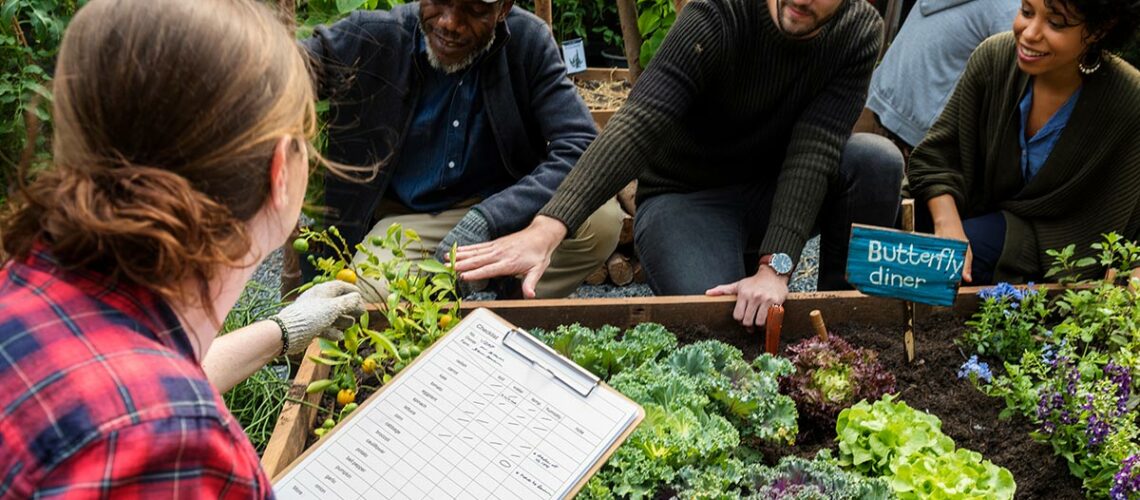Community gardens stand as vibrant hubs of life and sustenance. These green oases bring together diverse groups of individuals, fostering a sense of togetherness and shared purpose. Let’s take a look at the profound impact of community gardens on society, the environment, and the overall well-being of individuals.
The Roots of Community Gardens: A Historical Perspective
The community gardening movement gained momentum during the 1960s and 1970s, driven by a desire for self-sufficiency, environmental awareness, and a return to more natural ways of living. Urbanization and the increasing disconnect between people and their food sources further fueled the growth of community gardens in cities across the globe. As people sought ways to reconnect with the earth and foster a sense of community in increasingly dense urban environments, community gardens became a vital solution.
Today, community gardens continue to thrive and evolve. They have become dynamic spaces that serve a multitude of purposes—promoting sustainable agriculture, enhancing environmental stewardship, fostering social bonds, and providing educational opportunities. These gardens are not just a reflection of our agricultural heritage; they are living testaments to the enduring human spirit of collaboration, resilience, and the desire to cultivate a better future for all.
Nurturing Environmental Stewardship
Community gardens serve as ideal platforms for promoting environmental consciousness in various ways. Firstly, they encourage sustainable agricultural practices by advocating organic farming methods, composting, and natural pest control, reducing the reliance on chemical inputs that harm the environment. These gardens also minimize the carbon footprint associated with the transportation of produce since the food is grown locally.
Furthermore, they provide urban green spaces that support biodiversity, improve air quality, and mitigate the heat island effect in densely populated areas. By reconnecting people with the natural world and illustrating the interconnectedness of all living things, community gardens nurture a deeper appreciation for the environment and motivate individuals to make eco-friendly choices in their daily lives. In essence, community gardens are powerful agents of change, fostering a heightened sense of responsibility and care for the planet among those who tend to them, ultimately contributing to a greener, more sustainable future.
Promoting Physical and Mental Well-being
Engaging in gardening activities offers a plethora of health benefits. The physical exertion involved in tending to plants improves cardiovascular health, enhances flexibility, and strengthens muscles. Moreover, the act of gardening has been linked to reduced stress levels and improved mental well-being. The sense of achievement derived from seeing seeds sprout and flourish contributes significantly to one’s overall happiness and fulfillment.
Fostering Community Bonds
Community gardens are remarkable catalysts for forging and strengthening community bonds. These green sanctuaries bring together individuals from diverse backgrounds, uniting them under a common purpose. Shared labor creates a sense of camaraderie and fosters meaningful connections, transforming neighbors into friends and strangers into allies. The act of gardening becomes a shared experience, one where knowledge and wisdom are exchanged freely, and the joys and challenges of cultivation are collectively celebrated and faced.
Whether it’s trading tips on pest control, sharing surplus harvests, or organizing community events and workshops, community gardens provide the ideal backdrop for dialogue and cooperation. These shared spaces become forums for discussing local issues, sharing stories, and building a sense of belonging that extends beyond the garden gates. In nurturing the earth together, community members not only grow plants but also cultivate the seeds of stronger, more resilient communities, where mutual support and solidarity flourish.
Educational Opportunities
These gardens serve as living classrooms, offering a wealth of educational opportunities for both young and old. Children learn about the natural world, the cycle of life, and the importance of responsible consumption. Adults, too, benefit from workshops and seminars conducted within the community, focusing on topics such as sustainable agriculture, composting, and natural pest control. This knowledge empowers individuals to make informed choices about their lifestyles and dietary habits.
Cultivating Food Security
In an era marked by unpredictable climatic patterns and economic challenges, community gardens act as pillars of food security. By cultivating a diverse range of crops, communities reduce their dependence on mass-produced, commercially distributed food items. This resilience in the face of uncertainty ensures that families have access to fresh, nutritious produce, promoting better health outcomes.
Sowing the Seeds of a Better Future with Community Gardens
Community gardens represent more than just plots of land where plants are grown; they symbolize the collective spirit of humanity. In nurturing these green spaces, communities sow the seeds of a sustainable future—one where people are interconnected with nature, their neighbors, and the principles of environmental stewardship. As these gardens continue to flourish, so too does the sense of togetherness and resilience that defines our shared humanity.
Embracing the ethos of community gardens is not merely a choice; it is a commitment to a healthier, happier, and more harmonious world. By recognizing the vital role these gardens play in our lives, we can pave the way for a future where the act of growing food becomes a shared endeavor, and the harvest reaped is not just one of fresh produce, but of strengthened communities and a more sustainable planet.

